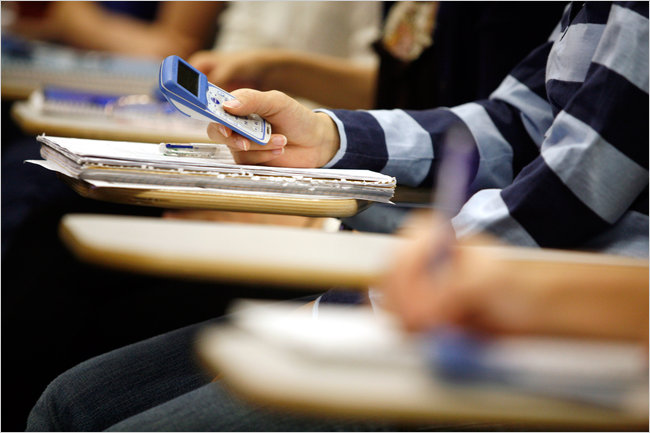Classroom clickers have made a particular impact in survey and seminar-style classrooms, where the sheer size of the classroom might otherwise make small group discussion and interaction near impossible. But clickers are making their presence felt in smaller classrooms as well. In this article, learn 7 key reasons why classroom clickers are poised to be a part of classroom education for the foreseeable future.

How Classroom Clickers Work
Classroom clickers transmit data wirelessly to a central processing unit located at the front of the classroom. Each student uses their clicker to transmit responses to questions and the unit processes the responses. Responses can be displayed in graph, chart or numeric format in near real-time.
1. Classroom clickers can be used for a variety of response formats.
Yes/no, multiple choice and even open-ended answers can be transmitted via a student’s personal clicker. So there is no limitation on what type of question can be asked or what type of information can be gathered through use of the clicker.
2. Clickers keep student attention and engagement higher.
Many students today struggle to stay focused with the constant allure of cell phones and tablets. Clickers place a small portable electronic device right into each student’s restless palm. Since responses, and non-responses, are recorded and are personalized to each student via the serial number on the clicker unit, teachers can see statistical information for students, even those who would not normally participate in an open discussion.
3. Classroom clickers can give a small group feel to even the largest impersonal lecture hall.
With the help of clickers, even a group of hundreds of students crowded into a lecture hall can have useful, fun and engaging small group level discussions in partnerships, small groups and debates. Through initial whole-class responses to questions, students use their clicker answers to begin discussion by highlighting where differences of opinion, misunderstandings or misconceptions may lie. Students can then build on those differences to engage in productive dialogues.
4. Classroom clickers make sticking to an eco-friendly platform easy.
Clickers can in large part replace the need for paper-and-pen in class resources for activities, quizzes and tests. Not only do clickers cut down on time spent with preparation and dissemination of supplies, but their use also makes quiz and exam results available much more quickly and with much less manual labor.
5. Clickers help instructors tailor lesson plans to student needs.
In the past, instructors had no real-time way to assess how well their lesson plans were meeting student needs. With the introduction of clickers, instructors can use questions strategically to determine where comprehension is lower than it should be and tailor instruction to student needs right away.
6. Clickers make session-long progress tracking easy.
Since responses are logged to each student via the clicker serial number and saved, both students and instructor can view progress over time and make adjustments accordingly.
7. Clickers reduce the financial burden on students.
Typically institutions fund the acquisition of the CPU and technology used to run a clicker system. Students purchase the clickers only, if even that, which are reasonably priced.
These 7 reasons are just a few of the key ways that the use of classroom clickers are enhancing classroom participation and learning for classes around the world.
To know more information : https://www.meridiaars.com/student-response-systems
